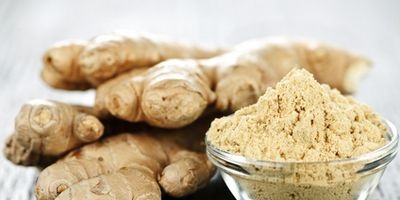|
 When a person is hungry, everything tastes good to him. But once you get enough, even the most exquisite dishes seem to lose their dignity. Why is this happening? And what is taste in general? When a person is hungry, everything tastes good to him. But once you get enough, even the most exquisite dishes seem to lose their dignity. Why is this happening? And what is taste in general?
In the walls of the larynx, epiglottis, pharynx, soft palate, but mainly on the surface of the tongue, there are special cells - taste buds. They are not evenly distributed throughout the tongue, but are collected in groups of ten to three hundred cells in formations, which are called taste buds; there are more than a thousand of them in a person's language.
Each receptor cell (don't confuse it with a papilla!) Is less than ten microns in size, but this is a real chemical laboratory. Modern science has managed to look inside this mini-laboratory, in many ways to learn the mechanism of its work.
Each receptor cell has a section facing the oral cavity; it is intended for contact with foodstuffs. The other end of the receptor is connected to two types of nerve fibers: one by one, signals from the cell are transmitted to the brain, and the other, on the contrary, orders are received from the central nervous system that regulate the activity of the receptor.
How does the taste bud work? After the molecules of the food substance "stick" to certain areas on the surface of the receptor, a biocurrent appears there - a kind of information about the stimulus. But this is not yet a taste sensation. For it to form, it is necessary to transmit the received information to the brain. Biocurrent cannot spread far beyond the cell where it originated, but chemical transmitters of information - mediators - are released under its influence. They, crossing the synaptic cleft, cause nerve impulses that are able to propagate along the nerve fibers. Through these fibers, messages about food or any other substances are transmitted to the brain.
Are there many nerve fibers involved in transmission? Hundreds of thousands! On some nerve pathways only messages are transmitted that the "tested" substance is sour, on others - that sweet, on the third - bitter, on the fourth - salty. But such specialized fibers are few - about 20 percent of the total. Most fibers are capable of transmitting information about all four main types of taste.
However, food is not only bitter or sweet, but also solid or liquid, hot or cold. And therefore, in addition to taste buds, there are also thermoreceptors on the tongue that transmit signals about the temperature of food, and tactile receptors that signal the degree of its softness or hardness. With the help of sophisticated research methods, it was possible to find out that the fastest of these receptors are tactile; they have the shortest latency period (the time from the onset of the stimulus to the moment the impulses appear), due to which they transmit their messages to the brain before the taste and temperature.
All information about food is sent for decoding to the taste centers, which are located in the cerebral cortex, in the thalamus, hypothalamus and limbic structures. Thousands and thousands of neurons are working here.
Among the neurons of the cortex there are narrow specialists-tasters who "know a lot" only about bitter or only sour. But there are also neurons - generalists, capable of understanding different tastes.
 The obtained information is decoded by neurons, analyzed, and then synthesized. As a result of the work of the taste analyzer (it includes taste buds, nerve fibers and neurons of the taste centers), an emotionally colored representation composed of a variety of shades of various tastes arises: tasty - pleasant, tasteless - unpleasant. The obtained information is decoded by neurons, analyzed, and then synthesized. As a result of the work of the taste analyzer (it includes taste buds, nerve fibers and neurons of the taste centers), an emotionally colored representation composed of a variety of shades of various tastes arises: tasty - pleasant, tasteless - unpleasant.
The operation of a taste analyzer depends on many reasons.First of all, from the state of the organs of the digestive system in general and the stomach in particular. Because everything seems tasty to a hungry person, because the taste buds are active at this moment, their sensitivity is sharply sharpened. But it is worth satisfying hunger, as now, according to signals coming from a "full" stomach, taste buds reduce their activity. It is clear that the strength of the gustatory sensation decreases, and with this, the feeling of pleasure that food delivers.
It will take one and a half to two hours, and under the influence of signals from the already "hungry" stomach, the sensitivity of the receptors will begin to recover, and after three to four hours it will again become high.
The most striking example of the influence of the stomach on the organ of taste are studies in which people on an empty stomach were given starch cachets containing a flavoring agent. Since such wafers do not dissolve in saliva, this substance, bypassing the taste buds, immediately entered the stomach.
Observations showed that when a person took an empty cachet, the sensitivity of the taste buds of the tongue remained almost unchanged. When the cachet was filled with sugar, salt or citric acid, 10-12 minutes after taking it, a decrease in the sensitivity of the receptors already began. Consequently, the receptors received signals from the stomach through the central nervous system.
Changes in external temperature, intense muscle work, stressful situations and some other factors that cause changes in the metabolism in the body affect the sensitivity of the taste analyzer. But, perhaps, nothing influences the formation of taste sensations like sight and smell.
Agree that an unpleasant smelling dish never tastes good. Two centers, gustatory and olfactory, are located almost side by side, in the lower temporal lobe of the cerebral cortex. The neurons of these centers interact closely, exchange information.
Experts conducted such an experiment. The volunteers were tied up and asked to identify the product offered to them by smell. None of the subjects confused herring with meat, chocolate, lemon. Moreover, a certain smell caused them the corresponding taste sensations: as soon as they smelt a lemon, their mouth became sour, and the smell of herring evoked an anticipation of salty. (By the way, such an experiment can be done by anyone who wishes. The results he will receive are similar, unless, of course, there is a runny nose or a disease in which the sense of smell is impaired.)
At the time of the onset of taste sensations, saliva was taken from the volunteers for analysis, and it turned out that the saliva released to the smell of bread differs in its composition from the saliva produced by the smell of meat. That is how accurately and unmistakably the neurons of the olfactory center informed the taste center about the food that was yet to be eaten!
 The taste center is almost as closely connected with the visual one. Undoubtedly, with a blindfold, you can't confuse potatoes with watermelon to taste. And yet it has been reliably established that eating with open eyes is better than with closed ones: the appetite and the entire digestive apparatus are more excited. Moreover, if the dishes are also beautifully served. Unfortunately, some people dismiss not only the regularity of food, but also to ensure the aesthetic pleasure of the meal. What a difference, they say. After all, the main thing is to satisfy the feeling of hunger. And yet the difference is big. A beautifully served table not only pleases the eye, but also enhances the secretion of digestive juices, which contributes to better digestion and assimilation of food. The taste center is almost as closely connected with the visual one. Undoubtedly, with a blindfold, you can't confuse potatoes with watermelon to taste. And yet it has been reliably established that eating with open eyes is better than with closed ones: the appetite and the entire digestive apparatus are more excited. Moreover, if the dishes are also beautifully served. Unfortunately, some people dismiss not only the regularity of food, but also to ensure the aesthetic pleasure of the meal. What a difference, they say. After all, the main thing is to satisfy the feeling of hunger. And yet the difference is big. A beautifully served table not only pleases the eye, but also enhances the secretion of digestive juices, which contributes to better digestion and assimilation of food.
And in conclusion, a little about taste preferences. There is no dispute about tastes, as they say. Some like sweet, others - salty, others - spicy ... These addictions are largely due to everyday traditions, a habit formed from childhood. They are probably peculiar only to humans. In any case, laboratory animals, in spite of any tricks, could not be taught to food flavored with pepper or mustard.
And who has not experienced an irresistible desire to eat salty or very sweet? And this is not due to a change in taste perception, but rather has an incentive, the reason for which is the occurrence of a temporary deficiency of certain substances in the body. It is for these reasons that some children and pregnant women enjoy eating plain chalk.
A healthy person can be allowed to follow their habits and tastes. But excessive passion for salty, sweet, spicy is harmful. Only moderation will help maintain the normal function of the gastrointestinal tract for a long time, which means it will allow you to experience true pleasure from food.
It is interesting
- Newborns have a well-developed sense of smell and taste. Already in the first days of life, children distinguish between sweet, sour and especially salty. Bad-smelling substances cause a grimace of displeasure in a child.
- The front part of the tongue is sweet, reacts mainly to sweet, its back surface - mainly to bitter, the sides of the tongue "love" salty and sour.
- Most people taste sugar at a 500-fold dilution, salt at a 2000-fold dilution, and quinine at a million-fold dilution.
- Food temperature plays an important role in taste. When you eat hot, scalding soup, you hardly feel the taste. The most favorable temperature for gustatory perception is in the range of 15-35 degrees.
- The taste buds of the tongue are the first to assess the taste of food; the grooved papillae perceive and transmit information about the bitter taste. The papillae specialize in acidic and salty. The most numerous mushroom papillae; those on the tip of the tongue react mainly to sweets.
- Along the nerve pathways, information received by the papillae is transmitted to the medulla oblongata, thalamus, hypothalamus, limbic structures and cerebral cortex.
- Here, neurons decode, analyze, synthesize the information received, and as a result, an idea of the taste of the food we eat is formed.
- The sensitivity of taste buds largely depends on the state of the digestive organs, in particular the stomach: according to signals from a "full" stomach, taste buds decrease their activity, and according to signals from a "hungry" stomach, they increase.
A. I. Esakov, O. N. Serova
|
 When a person is hungry, everything tastes good to him. But once you get enough, even the most exquisite dishes seem to lose their dignity. Why is this happening? And what is taste in general?
When a person is hungry, everything tastes good to him. But once you get enough, even the most exquisite dishes seem to lose their dignity. Why is this happening? And what is taste in general? The obtained information is decoded by neurons, analyzed, and then synthesized. As a result of the work of the taste analyzer (it includes taste buds, nerve fibers and neurons of the taste centers), an emotionally colored representation composed of a variety of shades of various tastes arises: tasty - pleasant, tasteless - unpleasant.
The obtained information is decoded by neurons, analyzed, and then synthesized. As a result of the work of the taste analyzer (it includes taste buds, nerve fibers and neurons of the taste centers), an emotionally colored representation composed of a variety of shades of various tastes arises: tasty - pleasant, tasteless - unpleasant. The taste center is almost as closely connected with the visual one. Undoubtedly, with a blindfold, you can't confuse potatoes with watermelon to taste. And yet it has been reliably established that eating with open eyes is better than with closed ones: the appetite and the entire digestive apparatus are more excited. Moreover, if the dishes are also beautifully served. Unfortunately, some people dismiss not only the regularity of food, but also to ensure the aesthetic pleasure of the meal. What a difference, they say. After all, the main thing is to satisfy the feeling of hunger. And yet the difference is big. A beautifully served table not only pleases the eye, but also enhances the secretion of digestive juices, which contributes to better digestion and assimilation of food.
The taste center is almost as closely connected with the visual one. Undoubtedly, with a blindfold, you can't confuse potatoes with watermelon to taste. And yet it has been reliably established that eating with open eyes is better than with closed ones: the appetite and the entire digestive apparatus are more excited. Moreover, if the dishes are also beautifully served. Unfortunately, some people dismiss not only the regularity of food, but also to ensure the aesthetic pleasure of the meal. What a difference, they say. After all, the main thing is to satisfy the feeling of hunger. And yet the difference is big. A beautifully served table not only pleases the eye, but also enhances the secretion of digestive juices, which contributes to better digestion and assimilation of food.









